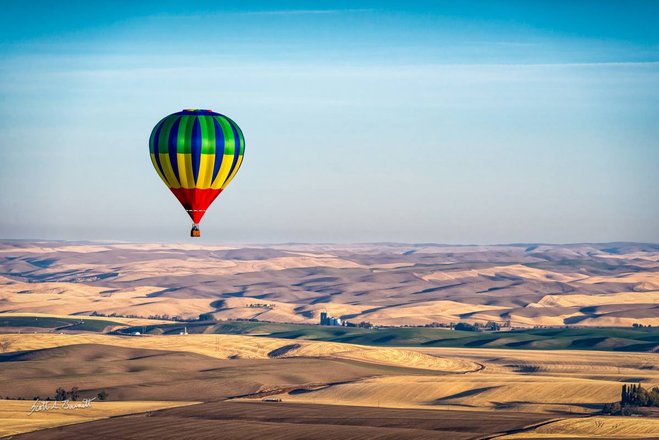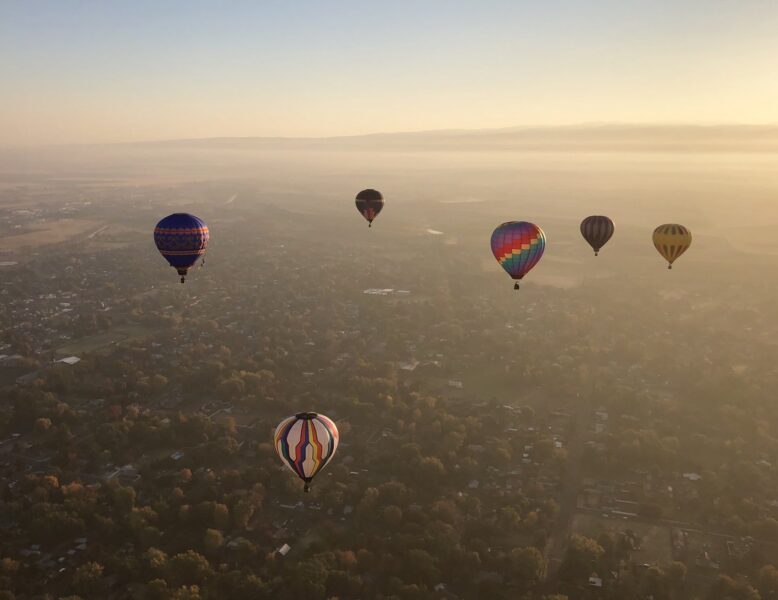By Vicki Hillhouse
You haven’t experienced the full glory of a morning rise-and-shine until you’ve been in a field at dawn’s early light surrounded by a couple dozen inflating hot air balloons as they prep for takeoff.
This is the wakeup call of the Walla Walla Balloon Stampede, which comes to Howard Tietan Park in early May. The annual festival draws about 30 balloon pilots to Walla Walla each year as the Northwest’s longest running hot air balloon event.
The morning launches are free to attend, as is the Nite Glow Spectacular that illuminates the darkened skies with radiant colors from the tethered balloons.
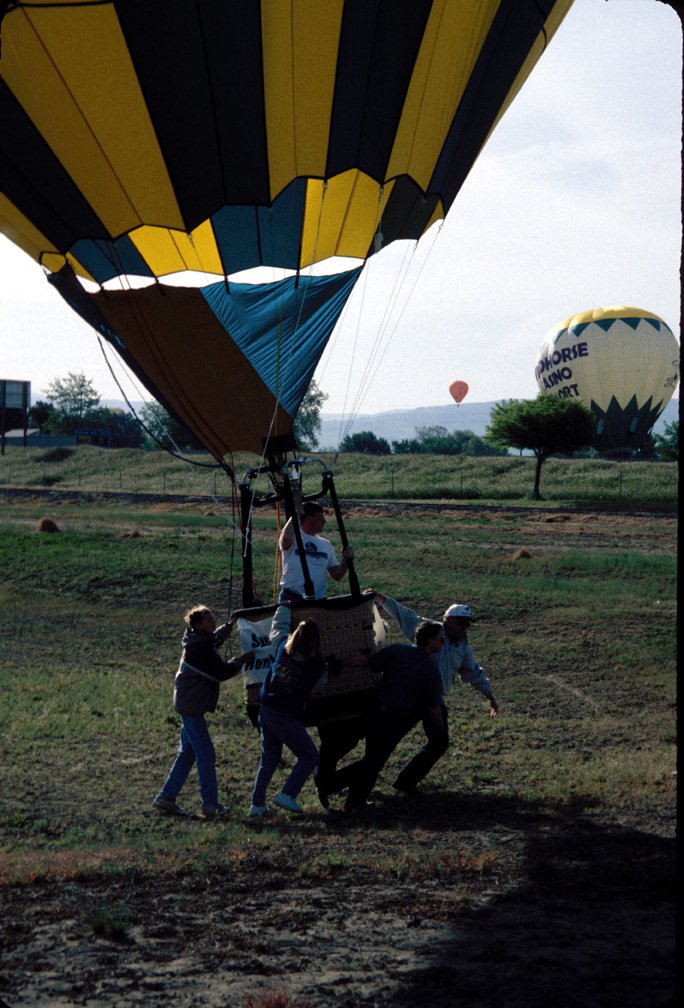
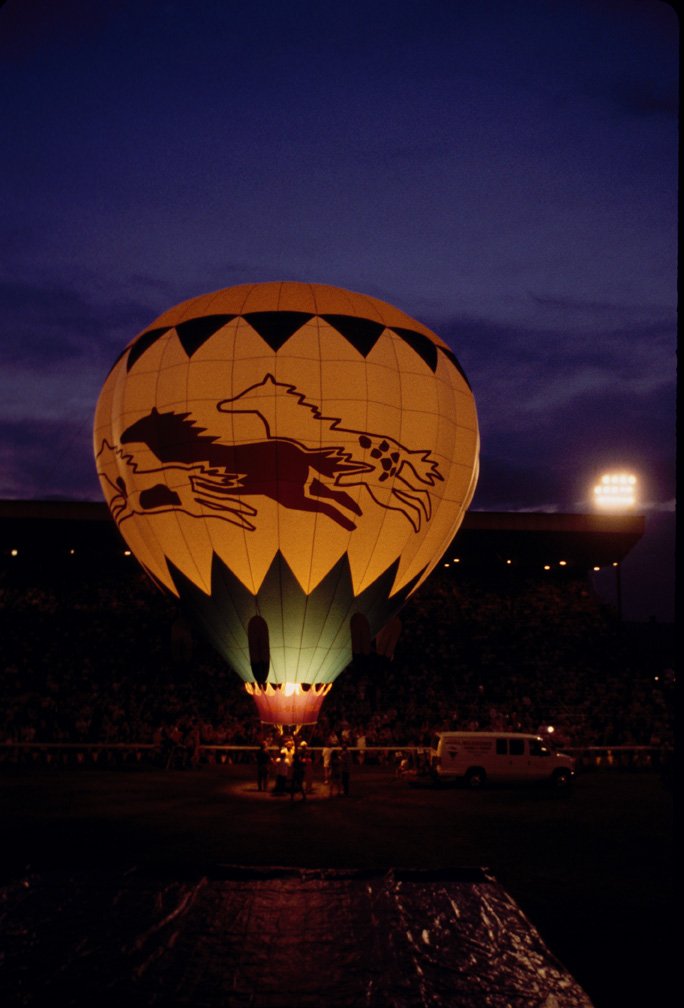
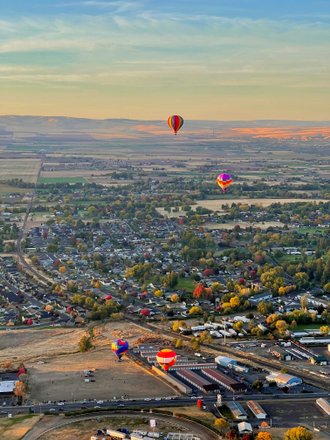
At the helm of it all is Laurie Spencer, a more than 30-year ballooning pilot and the owner of Boise-based Lighter Than Air. The company began coordinating the long-held community event in 2014. At the time, it included Laurie’s now late husband, Scott Spencer, who counted the Balloon Stampede as his first major event when he was a young pilot.
During a chat with Laurie, she shared that and other essential details to know about the beloved festival:
What is the Walla Walla Balloon Stampede and how did it start?
We bring balloons into the community, and we color the sky.
The Balloon Stampede started in 1974. There were a few guys who had seen a balloon, were inspired by it, got involved in ballooning and wanted to have an event in their hometown of Walla Walla. They launched in a wheat field. That was the start of the Balloon Stampede that has continued ever since. More pilots were invited over the years.
Without the two-year absence from COVID-19, this would have been the 49th year. Instead, it’s the 47th.
We see kids of the kids that came out when they were little, saying, ‘Oh, my mom and dad took me to the Balloon Stampede and now I’m bringing my kids to the Balloon Stampede.’
We give them a little taste of the dream of flight. An announcer will talk to the crowd throughout the event. We land in fields and at the airport.
It costs a lot of money to put the event on. Without sponsors we couldn’t do it. I’m incredibly grateful for them.
How has the event changed over the years?
Venue is one of the big ones. It started in a wheat field and moved to Walla Walla High School. It’s been at the Walla Walla County Fairgrounds and Garrison Middle School. When we took it over, Scott’s vision was to make it very family-friendly with a park atmosphere. His thinking was that you don’t have different parts of an event in different locations, which is what was happening. Launches would take place at different spots every day.
His thinking was let’s bring the community to us. That’s what makes it a festival. That makes it an event. Everything we do, we do at one location at Tietan Park.
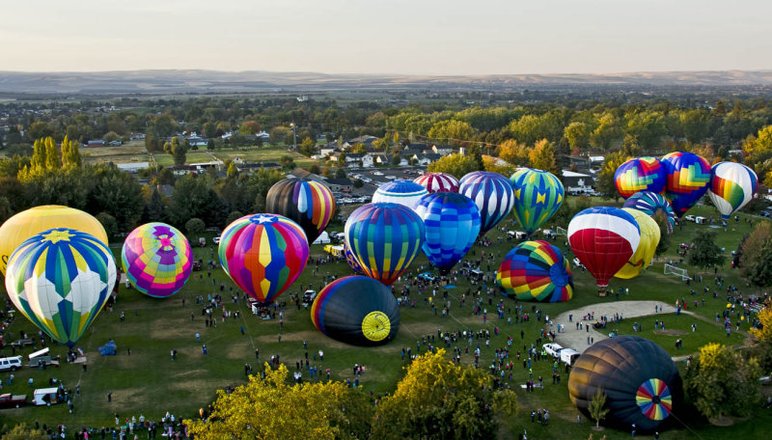
Why are flights so early in the morning?
Mornings are the most stable time of day. Once in a while you can get an afternoon flight. You have to land before the sun sets, so if you want to go in the evening, you generally take off an hour or an hour and a half before sunset. Winds will take you in a different direction than in the morning.
Friends who are both airline and balloon pilots have told me that as balloon pilots we have to make so many more decisions in a one-hour flight than in an airplane.
The wind is like a river in the sky. It has length and width and depth. Every flight is different, and every flight is a challenge.
What are challenges for a successful event?
The weather. This year the event returns to May, which is another change we’ve had. Recently, we’ve had the Balloon Stampede in October, and the weather hasn’t cooperated. Traditionally, that’s been a very stable time of year. That changes, of course. But historically with our weather studies, the percentage of successful flights in springtime has been pretty low, too.
Other times of the year that might work with the weather don’t work for other reasons. For instance, when the farmers have their crops growing, they don’t want us to disturb their crops, landing in the fields.
If you have a high-wind landing, you don’t have an opportunity to land at the edge of the fields. A balloon will touchdown and drag, drag, drag. If it rained the night before, you have another problem because then you’re working into muddy fields.
We can’t just change easily whenever the weather doesn’t cooperate during a certain time of year. We have to also consider other events that pull our pilot pool away. There are a lot of things we look at.
What makes Walla Walla a special place to hold the event?
The open fields and the community. It’s a pleasure to be welcomed by the people to land and to be here. That’s a really fun part for me. It’s kind of like everywhere you go — into restaurants, tasting rooms, shopping downtown — there’s a general feeling that the balloons are here. Some storefronts paint their windows. It’s really fun.
